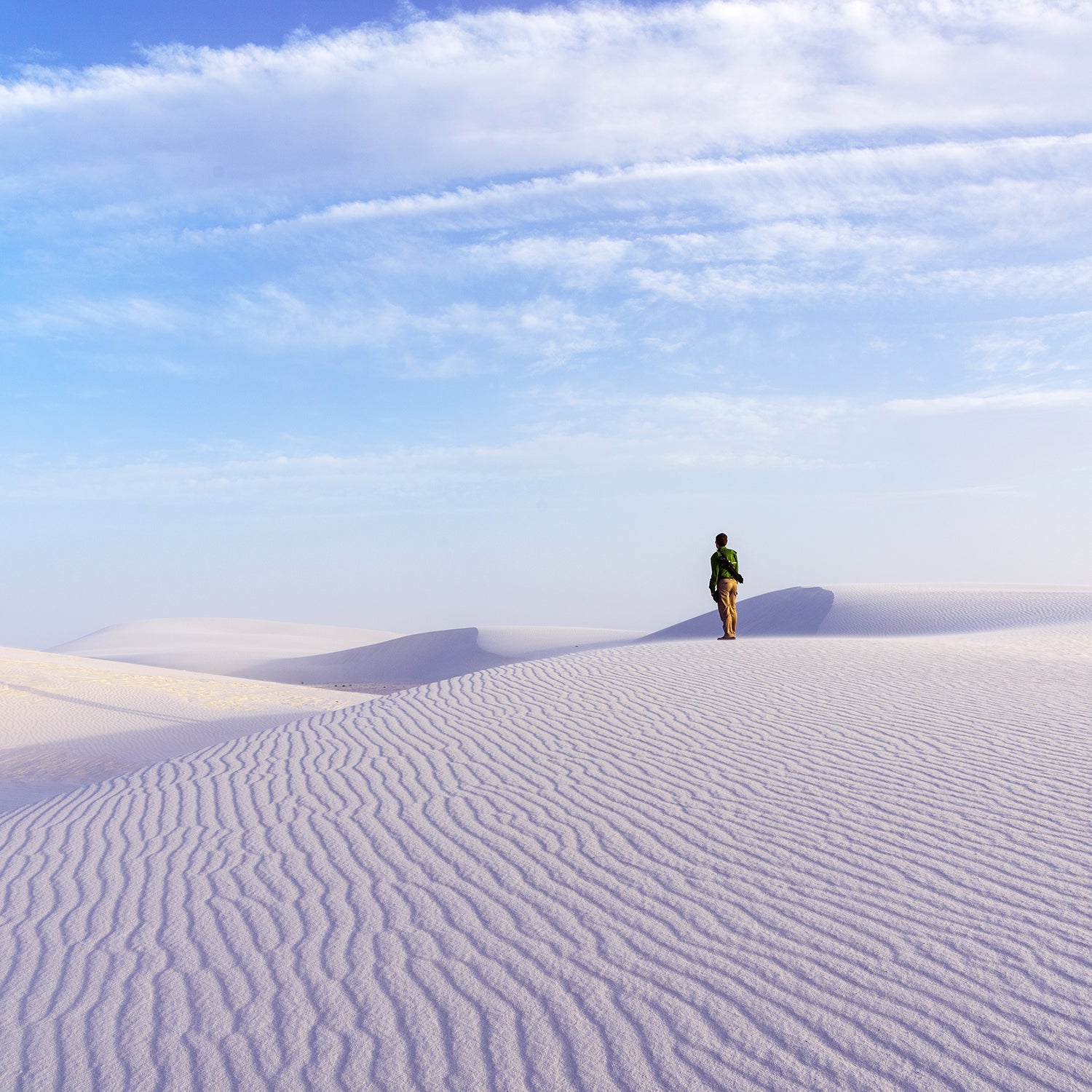As of press time, some trails, campsites, and businesses are closed due to Covid-19 precautions. To check for safety protocols and potential closures, visit the individual websites before you go.
Summer road trips to national parks feel like an American rite of passage. But in winter? ThatÔÇÖs when the hardiest travel to our countryÔÇÖs wildest places for snow-covered volcanic landscapes, cool desert vibes, and empty beaches. WeÔÇÖve put together regional road trip suggestions in various parts of the country to help you explore some of your areaÔÇÖs lesser-known national parks during the least busy time of the year.
Southern California
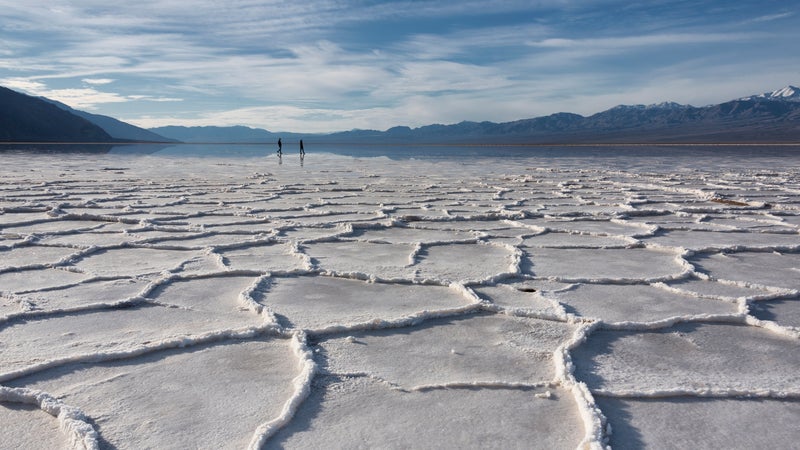
On the southern border of CaliforniaÔÇÖs Sierra Nevada, two stunning national parks sit side by side:┬á. ItÔÇÖs worth visiting both of them. To get here, itÔÇÖs a five-hour drive from Los Angeles or four hours from San Francisco. In winter, youÔÇÖll find ranger-guided snowshoe hikes, cross-country skiing, and the worldÔÇÖs largest treeÔÇöGeneral Sherman, a towering sequoia that weighs more than 2.7 million poundsÔÇöcovered in snow. Book a room or cabin at the┬á (from $129), just outside the Sequoia National Park entrance in the town of Three Rivers.
From there, itÔÇÖs four hours to┬áDeath Valley National Park, where youÔÇÖll appreciate the contrast from snowy peaks to rolling sand dunes in a below-sea-level basin. The climate in Death Valley is ideal during the winter months. Hike the trail along the southwest rim of a dormant volcano at Death ValleyÔÇÖs Ubehebe Crater, and meander along ArtistÔÇÖs Drive, a nine-mile road that passes through hillsides colorfully tinted with volcanic sediment.┬á (from $22) is open year-round and is the only campground in the park that accepts reservations.
Eastern Seaboard
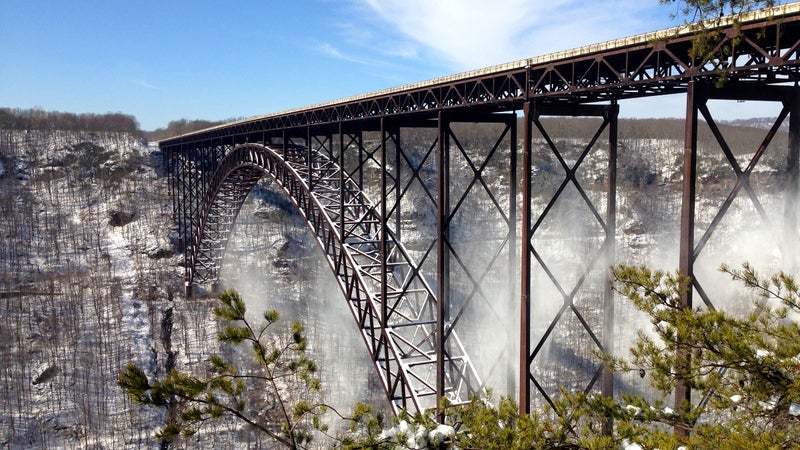
Just 90 minutes from Washington, D.C., youÔÇÖll find the forested hills of┬á, a small but scenic national park in Maryland with 25 miles of hiking trails and the presidential retreat of Camp David in a top-secret locale. If youÔÇÖre a rock climber, thereÔÇÖs bouldering throughout the park year-round and sport climbing at Wolf Rock, a short hike from the parkÔÇÖs visitorÔÇÖs center. For non-climbers, the four-mile round-trip hike to┬á┬ápromises panoramic views. The park has┬á year-round in rustic backcountry shelters (from $10) accessed via a three-mile trek.
A visit to  is just 23 miles west. The C&O Canal, which has a multiuse dirt-and-stone walking path, stretches for 185 miles from Washington, D.C., along the Potomac River into Cumberland, Maryland. Driving along the C&O Canal Scenic Byway makes for a great road trip.
Next, head to the beaches of┬á, a 40-mile stretch of coastline across Maryland and Virginia. The beach camping (from $30) fills up months in advance during summer, but from November to March, campsites are first come, first served and far less busy. YouÔÇÖll pitch a tent on the sand of this barrier island amid┬áherds of wild horses.
To add one more stop, enjoy a half-day┬ádrive to West VirginiaÔÇÖs┬áNew River Gorge National Park, where the famed New River Gorge Bridge spans over the water and rock climbers flock to the sandstone walls along the gorge. The park has more than 100 miles of hiking trails. Sleep nearby in a┬á (from $201; via Airbnb) suspended in an old-growth forest.
Desert Southwest
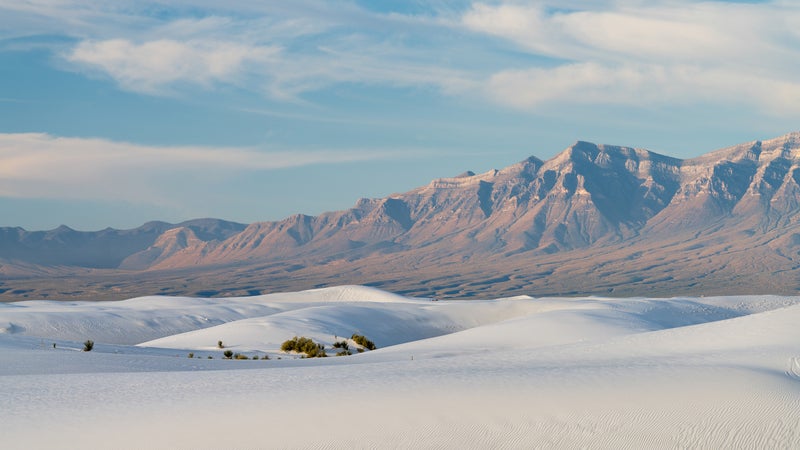
While crowds converge on southern UtahÔÇÖs well-known national parks like Arches and Zion even in the winter months, New MexicoÔÇÖs parks remain off the radar. From Denver, itÔÇÖs an eight-hour drive to┬á, a remote archaeological site in northern New Mexico thatÔÇÖs designated an International Dark Sky Park for its stellar stargazing. The trails here are covered in snow in winter, but you can still study the architectural feats of the Ancestral Puebloans and gaze through a telescope to a clear night sky. Drive┬áthree┬áhours east to visit the historic pueblo of Taos and┬ástay in a vintage trailer across from ▓╣│┘╠ř (from $95).
Head six hours south to hit┬á, where its stunning dunes look white as snow and are just as much fun as snow to sled down. Winter is a great time to visit while avoiding summerÔÇÖs scorching temperatures. Hike the dunes along five designated trails, or continue your road trip along the Dunes Drive, an eight-mile roadway that takes you into the heart of the dunes. This┬á (from $75; via Airbnb) in a historic adobe home in San Miguel is about an hour from the dunes and has its own hot tub.
ItÔÇÖs another three hours toward the Texas border to reach New MexicoÔÇÖs , where you can tour several of the underground caves on your own, along with┬ámiles of above-ground hiking trails across the Chihuahuan Desert. YouÔÇÖll find plenty of inns at the parkÔÇÖs gateway town, WhiteÔÇÖs City.
Rocky Mountains
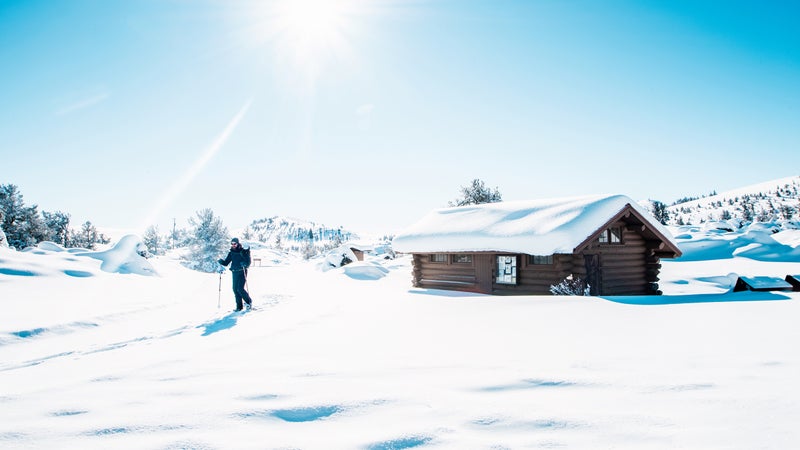
In summer and fall, rock climbers go to┬á in southern IdahoÔÇöabout three hours north of Salt Lake City or ten-plus hours from SeattleÔÇöto scale┬áthe granite faces the park is known for. But the place is practically empty in winter. YouÔÇÖll find ice climbing for the well-initiated, or you can cross-country ski on the unplowed roads throughout the park. Stay at the 11-room┬á (from $120) in the nearby town of Almo.
ItÔÇÖs worth the extended detour into the city of Boise, Idaho, where skiing ▓╣│┘╠ř is less than an hour from downtown. You can make a reservation for a hot springs soak, or book a private tub (from $20) ▓╣│┘╠ř in nearby Idaho City. The┬á (from $116) has sleek rooms and an attached bar (currently closed due to COVID-19) in BoiseÔÇÖs artsy Linen District.
┤í│┘╠ř, about three hours from Boise outside the town of Arco, Idaho, you can explore lava tubes via snowshoes or cross-country skis along the parkÔÇÖs often-groomed CratersÔÇÖ Loop Road, which is closed to cars from November to April.
Want more? ItÔÇÖs a half-day┬ádrive from Craters of the Moon to reach the iconic scenery of┬á and, which are far less crowded during winter and just as stunning covered in snow.


